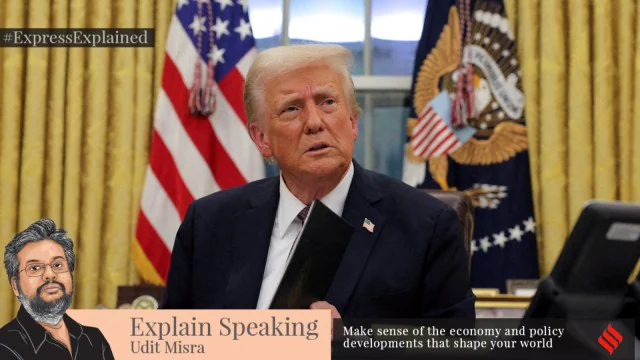- Flavors and E-Liquids
- Health and Safety
- Top Vape Brands
- Vape Deals and Discounts
- Vape Reviews
- Vaping
- Vaping Culture
- Vaping Guides
- Vaping News and Trends
Explain Speaking: Making sense of Trump’s tariff threat

Introduction
Trade wars may be fought with spreadsheets and sanctions, but their ripples touch every corner of the global economy. When former President Donald Trump threatened tariffs, he ignited a whirlwind of debates that extended beyond economics to the realm of politics and diplomacy. Understanding this threat isn’t just about economics—geekbar vape flavors it’s about decoding the strategies and implications of wielding tariffs as a geopolitical tool.
The Genesis of the Tariff Threat
Trump’s tariff threats weren’t born in a vacuum; they were the crescendo of his “America First” economic doctrine. His presidency marked a pivot from multilateral trade norms to assertive bilateralism. Early campaign rhetoric vilified trade agreements like NAFTA and the TPP as detrimental to American workers. Once in office, Trump launched investigations under Section 232 of the Trade Expansion Act, setting the stage for tariff imposition on steel, aluminum, and later, other goods.
At the heart of these moves was the U.S.-China trade imbalance, which Trump cast as emblematic of economic unfairness. The tariff announcement became a flashpoint, stirring concerns among allies and adversaries alike.
The Mechanics of Tariffs
A tariff, in its essence, is a tax levied on imported goods. The primary aim is to make foreign products more expensive, thereby encouraging domestic consumption of locally made alternatives. In theory, this policy stimulates local industries and safeguards jobs.
However, the devil lies in the unintended consequences. Tariffs often lead to retaliatory measures, spiraling into a tit-for-tat economic skirmish. Furthermore, higher costs on imported goods are frequently passed on to consumers, eroding purchasing power and dampening economic sentiment.
Key Stakeholders in the Tariff Debate
The tariff threat posed stark implications for various groups. Domestically, manufacturers reliant on imported components faced increased production costs. For American farmers, retaliatory tariffs from trading partners like China threatened access to key export markets. Meanwhile, consumers bore the brunt of price hikes on everyday goods.
Globally, longstanding allies such as Canada and the European Union bristled at being caught in the crosshairs. For emerging economies, the tariffs geek bar pulse disrupted supply chains, compounding their vulnerabilities.
Economic Implications
In the short term, tariffs can deliver a boost to industries shielded from foreign competition. For example, U.S. steelmakers reported a surge in demand following initial tariff announcements.
The long-term picture, however, is less rosy. Disruptions to global trade networks risk fragmenting international cooperation, reducing efficiency, and increasing costs. Over time, this could dampen innovation and erode the comparative advantages that underpin global commerce.
Political Motivations and Calculations
Trump’s tariff threat wasn’t purely an economic gambit; it was a calculated political move. Domestically, it catered to key voter bases, particularly in manufacturing-heavy states pivotal to electoral outcomes. Internationally, the threat acted as a lever to extract concessions from trade partners unwilling to lose access to the U.S. market.
The move also signaled a broader recalibration of U.S. foreign policy—an effort to shift global dynamics in favor of American interests by upending entrenched trade norms.
Criticism and Support for Tariffs
Critics of the tariff strategy argued it was a blunt instrument ill-suited for addressing nuanced economic challenges. Economists warned of its inflationary impact and potential to provoke retaliatory measures. Many viewed it as a symbolic gesture, with limited effectiveness in resolving trade imbalances.
Yet, supporters hailed it as a necessary disruption to level the playing field. Proponents contended that the tariffs were overdue, arguing they protected jobs and revitalized struggling industries.
The Road Ahead: Navigating Uncertainty
As the dust settled on Trump’s tariff threat, its ultimate outcomes remained uncertain. Potential scenarios ranged from negotiated settlements that redefined trade relationships to protracted disputes that further strained international ties.
The episode underscored the precarious balance in trade policy: between protecting domestic interests and maintaining global economic stability. Geek bar digi flavor For policymakers, the challenge lies in wielding tariffs judiciously, ensuring they remain a means to an end—not an end in themselves.
In a globalized world, trade wars leave no winners—only lessons. Perhaps the greatest takeaway is the need for collaboration, not confrontation, to address the complexities of modern trade.




